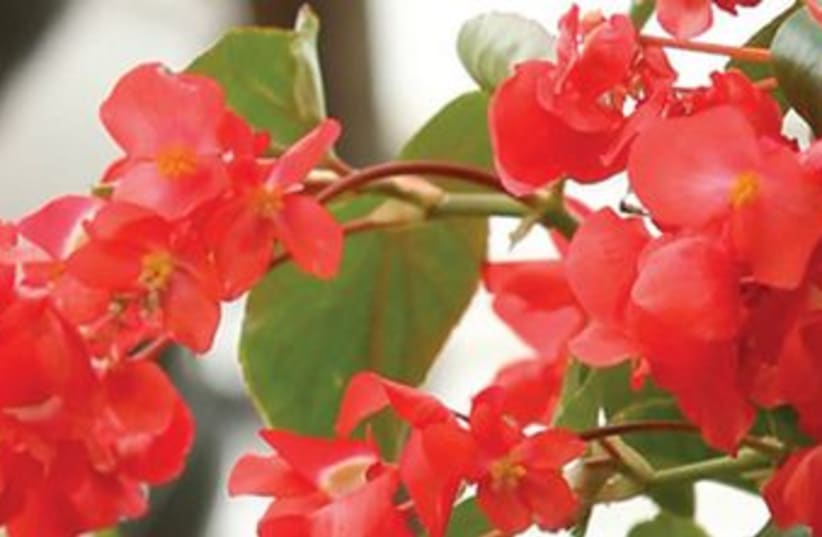CHOOSE THE RIGHT PLANTS Your basket will be only as beautiful as the plants you choose. There’s much to consider – bloom color, foliage color, texture, growth habit and the plants’ mature size, among other factors.Crawford suggests starting with the most basic question: How much sun will the basket get? Whether a plant prefers full sun (more than six hours of sunlight a day), partial sun or partial shade (three to six hours) or full shade (less than three hours). Narrow the field by considering only plants that meet the sun requirement of the basket’s site.Luckily for gardeners, growers have developed many plants that tolerate both sun and shade. That’s especially helpful in a situation such as a west-facing porch, where the basket is shaded most of the day but blasted by hot sun in the late afternoon.
ADD ARTISTRY Next comes the task of choosing plants that create a pleasing arrangement – and that requires a bit of artistic sense.Crawford says she starts by choosing a taller plant to go in the center of the basket – “something that completely dazzles me” – and then looks for two or three more types of plants to surround that centerpiece. She holds the plants against one another to see how they look together, just as she would hold a throw pillow against her couch fabric to make sure the colors and textures work.
CONSIDER SIDE PLANTING You can give your hanging baskets a full, rounded look through side planting, which is inserting plants horizontally into holes in the sides of the basket. It’s easiest to do that with a wire basket lined with a material such as coir or sphagnum moss.Not all flowers tolerate side planting well, however. Their roots are subjected to more water than top-planted flowers, Crawford says. In her tests, she’s had the best success with wax and dragon wing begonias, coleus, creeping Jenny, impatiens, ivy, lamium, variegated ivy, trailing torenia and scaevola.TAKE THE EASY ROUTE Does all that plant-choice information sound like too much effort? Then just copy the pros’ designs. Container gardening books often suggest plant combinations for hanging baskets. So do gardening websites, which you can find by Googling “hanging basket plant combinations.”
PLANT GENEROUSLY Crawford advocates using plenty of plants. A 25-cm.-diameter basket needs at least three or four plants. Bigger baskets can hold more plants. A 35-cm. basket can hold 17 plants – one centerpiece plant surrounded by eight smaller plants, with another eight planted horizontally in the sides. Her biggest basket, at 50 cm., holds a whopping 38 plants.Start with larger plants so your basket will fill out faster. Crawford likes plants with 7-cm. root balls. They’re big enough to create a show right from the start but less expensive than plants sold individually.
PLANT PROPERLY A good-quality soilless planting mix is best for hanging baskets. Soilless mixes drain better than soil, a critical feature for containers. Look for mixes that contain slow-release fertilizer, or you can add some when you plant. Waterabsorbing crystals can also be added to help keep plants from drying out.Plant so the planting mix comes to about 2.5 cm. below the top of the container, which leaves enough room to add water. It is recommended to moisten the planting mix before filling the basket. Then hang and enjoy.Keep hanging baskets looking their best
✿Water correctly. Overwatering is just killing a plant with kindness. Plants need water, but their roots also need oxygen.They can’t get it when they’re waterlogged. Make sure the soil is somewhat dry before you add water, says garden guru Pamela Crawford.✿ Water thoroughly. Give the plant water until the liquid oozes out of the bottom of the container. Water just the soil, not the leaves. Wet leaves invite sun damage and disease.✿ Water in the morning. Do this when it’s still cool outside.✿ Water enough. Overwatering is a bad thing, but so is underwatering. Never let your plants dry out to the point that they wilt. If you do, they’ll take weeks to rebound. That might mean watering more than once a day during hot spells, particularly if the basket is small or is located in a windy or sunny spot. If water runs right out of the bottom of the pot just seconds after you start to water, it’s a sign that the soil is too dry.Dried-out soil shrinks, creating a gap between the soil and the container. Water just flows down through that gap and out of the pot instead of reaching the plant roots. Should that happen, water the basket repeatedly until the soil has expanded and the basket becomes heavy.✿ Fertilize frequently. Add slow-release fertilizer to the soil when you plant, and supplement it with a liquid fertilizer.✿ Rotate. Hanging baskets are often hung on a porch or other site where they’re exposed to sunlight on only one side. In that case, it’s important to rotate the baskets for even growth. Suggestion: Hang the baskets from swivel hooks, which you can buy at a hardware store.✿ Deadhead if necessary.Most plants commonly used in hanging baskets don’t need deadheading, which means removing their spent flowers.But some plants do, such as daisies and verbena.✿ Pinch back. It can be hard to bring yourself to pinch back plants when they look good, but doing so will prevent those that need it from getting leggy. The beginning of July is a good target date for cutting plants back a couple of inches. When plants get leggy or uneven, trim the unwanted portions with your fingers or with pruning shears.– M.B.B.Follow @JPost_Lifestyle
